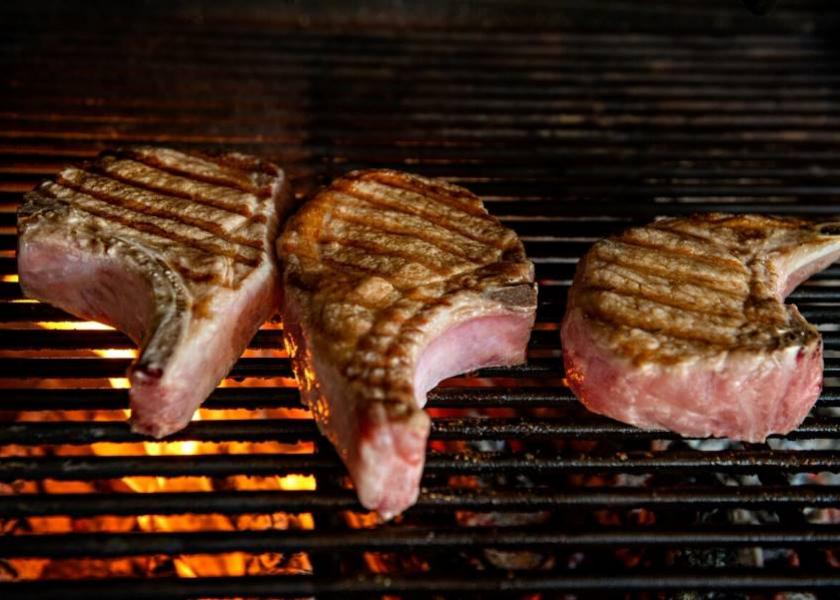Want Better Pork? Use a Meat Thermometer

When you cook pork, how do you know it is ready to serve? In a recent survey, two-thirds of consumers used the color of cooked pork chops to determine when it was done cooking. Now, you might be thinking…what’s wrong with that? An observant cook will notice the change from a pink or red pork chop to a more white or beige cooked color. But in a recent study, consumers were asked to identify a picture that coincided with their desired degree of doneness for pork chops. A whopping 89% of people chose photos that corresponded to pork chops cooked to temperatures greater than the ideal cooked temperature of pork. In case you need a refresher, the ideal temperature is 145°F.
Numerous research studies using trained sensory panelists, laboratory methods of evaluating pork eating quality and consumer taste panels have demonstrated that pork is better when cooked to 145°F compared with higher temperatures. Simply put, pork is more tender, more juicy and people like it better at this medium-rare degree of doneness, and cooking to this temperature does not pose a food safety risk.
Overcooking pork can cause it to lose too much moisture and fat, which contributes to a pork chop that seems more tough and dry as you eat it. In fact, in our work at the University of Illinois over the last 10 years, the one thing that can reliably improve your eating experience with pork chops is cooking it to 145°F. This seems to be more important than the color of pork, how much marbling it has, how it is aged or stored, and even the method by which it is cooked. Plain and simple, pork chops are better when cooked to the right temperature of 145°F.
Why do so many people overcook pork?
I think there are two reasons. First, the recommended cooked temperature of pork changed from 160°F to 145°F about 10 years ago. Improvements in how pigs were raised, including moving pigs indoors and feeding them standardized diets, all but eliminated food safety issues that used to require pork chops and roasts to be cooked to 160°F. But changes like this are hard to communicate to consumers and take time to filter out to everyday cooks. My guess is that if you looked in your house right now, you could find a cookbook or recipe where 160°F is the recommended temperature for pork products.
Second, many people overcook pork because they don’t even check what temperature their meat is at before eating it. Use of meat thermometers is rare among home cooks, and I would argue even more rare on cooking shows and among celebrity chefs.
So, what can you do? At home, you can use a meat thermometer with your pork chops and roasts. Stop cooking them when they reach 145°F, let them rest for at least three minutes, and then enjoy. You can also help spread the word about the right temperature to cook pork. Make meat thermometers your new go-to housewarming gift. They also make great stocking stuffers! You can also ask at restaurants that your pork be cooked medium-rare or 145°F. It will make a big difference in your eating experience.
My guess is if you are reading this, you love pork. Cook it correctly, to 145°F, and you will love it even more!
Dr. Anna Dilger is an associate professor of meat science at the University of Illinois.
More from Farm Journal's PORK:
Meat Matters: Is Bigger Better?
The Secret to a Great Holiday Ham







